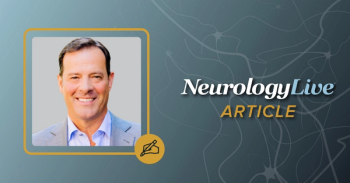
Unsettled Debate: Interictal Epileptiform Discharges
What exactly should physicians do when presented with interictal epileptiform discharges (IEDs), or spikes?
An issue currently debated in the epilepsy community revolves around the treatment of spikes in electroencephalography (EEG). That is, what exactly should physicians do when presented with interictal epileptiform discharges (IEDs), or spikes? And how do they affect cognition, if at all?
Before the medical community can make any headway, some obstacles must be overcome. The first major hurdle is quantifying IEDs, which, as Ivan Sanchez Fernandez, MD, a researcher at Harvard University, tells us, we are not able to do yet. If there is no way to measure interictal epileptiform activity, then there is no way to correlate it with cognition.
One of the challenges of quantification is how resource intensive it is, requiring time and effort from EEG readers. Other challenges include differences in morphology, lateralization, and voltage across different EEGs.
One way to measure EEGs, the spike and wave index, was introduced1 and refined2 in 2 studies on electrical status epilepticus during slow wave sleep (ESES), perhaps the most extreme form of interictal epileptiform activity. However, the clinical impact of this measurement remains unclear, said Sanchez Fernandez.
He went on to say that there is no consistent evidence that IEDs are related to impaired cognition, though they are correlated to abnormal neural networks in animal models, even in the absence of seizures.
Roberto Tuchman, MD, the Director of the Brain Development Network at Nicklaus Children’s Hospital, reiterated the point that there is no clear correlation with behavior and learning problems.
Though IEDs can cause short-term cognitive impairment, Tuchman said, little evidence of impairment over the long term exists.
Tuchman also highlighted the need for understanding social cognition as a process, as social cognitive dysfunction correlates with many developmental disorders.
He went on to ask, “does the epileptic activity itself contribute to severe neurological and cognitive impairments above and beyond what may be expected from the underlying pathology?”
In order to answer this question, he concluded, we need to develop standardized methodology for screening, measure and assess key developmental cognitive characteristics, and develop ways to think about EEG studies, as well as improve our understanding of the natural history of spikes.
Kevin Chapman, MD, of the University of Colorado, emphasized the need to establish a consistent spike and wave index and to read EEGs with more care and focus. This, he argued, can help establish whether or not there is a clinical impact of spikes on cognition.
Supposing there is a cognitive impact, can spikes even be treated?
Clinical data suggests anti-ictal capabilities of some therapies. One study mentioned by Chapman3 demonstrated a suppression of interictal epileptiform activity through the use of phenobarbital, carbamazepine, and valproic acid. Current research, however, is unclear on exactly which therapy is the most effective.
The final question centers around who should be treated. Chapman mentioned several factors for making that decision, including etiology, early development, regression, and spike index.
Even though the debate on IEDs is far from settled, researchers are certainly moving in the right direction.
The AES 2015 Annual Meeting was held December 4-8 in Philadelphia.
Session: Investigators' Workshop: Spikes and Cognition: Shoud We Treat Spikes? . Dec. 76, 2015.
References:
1. Tassinari CA, et al.
2. Aeby A, et al.
3. Libenson L, Caravale B.
Newsletter
Keep your finger on the pulse of neurology—subscribe to NeurologyLive for expert interviews, new data, and breakthrough treatment updates.



























